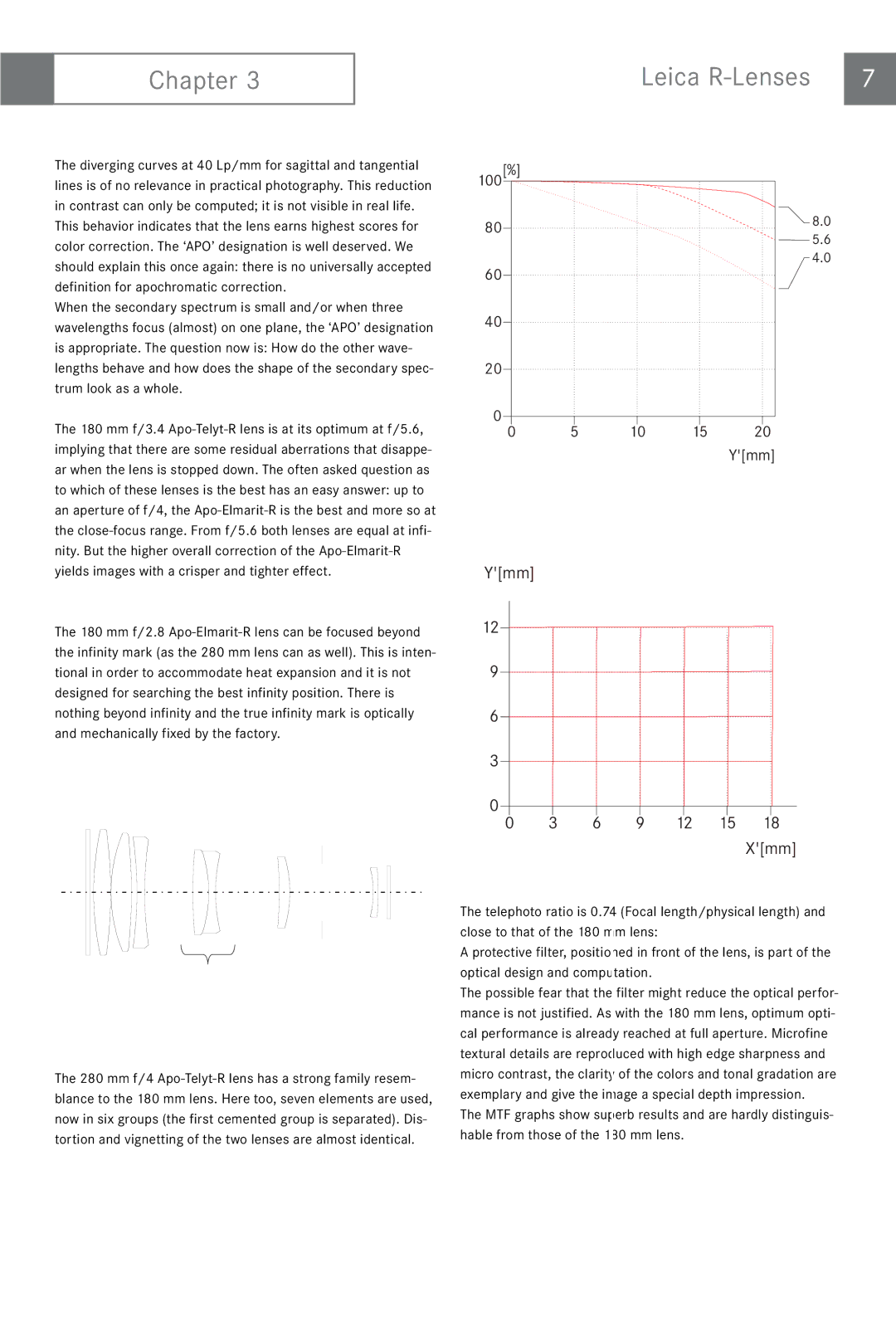
Chapter 3
Leica | 7 |
|
|
The diverging curves at 40 Lp/mm for sagittal and tangential lines is of no relevance in practical photography. This reduction in contrast can only be computed; it is not visible in real life. This behavior indicates that the lens earns highest scores for color correction. The ‘APO’ designation is well deserved. We should explain this once again: there is no universally accepted definition for apochromatic correction.
When the secondary spectrum is small and/or when three wavelengths focus (almost) on one plane, the ‘APO’ designation is appropriate. The question now is: How do the other wave- lengths behave and how does the shape of the secondary spec- trum look as a whole.
The 180 mm f/3.4
The 180 mm f/2.8
100[%] |
|
|
|
|
80 |
|
|
| 8.0 |
|
|
| 5.6 | |
|
|
|
| |
|
|
|
| 4.0 |
60 |
|
|
|
|
40 |
|
|
|
|
20 |
|
|
|
|
0 |
|
|
|
|
0 | 5 | 10 | 15 | 20 |
|
|
|
| Y'[mm] |
Y'[mm] |
|
|
|
|
|
|
12 |
|
|
|
|
|
|
9 |
|
|
|
|
|
|
6 |
|
|
|
|
|
|
3 |
|
|
|
|
|
|
0 |
|
|
|
|
|
|
0 | 3 | 6 | 9 | 12 | 15 | 18 |
|
|
|
|
|
| X'[mm] |
The 280 mm f/4
The telephoto ratio is 0.74 (Focal length/physical length) and close to that of the 180 mm lens:
A protective filter, positioned in front of the lens, is part of the optical design and computation.
The possible fear that the filter might reduce the optical perfor- mance is not justified. As with the 180 mm lens, optimum opti- cal performance is already reached at full aperture. Microfine textural details are reproduced with high edge sharpness and micro contrast, the clarity of the colors and tonal gradation are exemplary and give the image a special depth impression.
The MTF graphs show superb results and are hardly distinguis- hable from those of the 180 mm lens.
